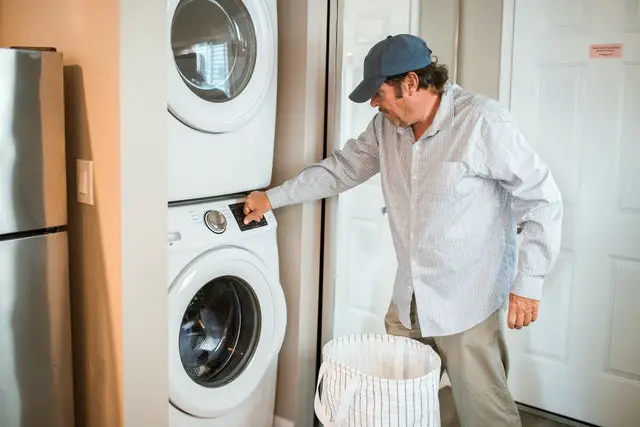Stuffed animals are among the biggest hotspots that carry terrible viruses and bacteria around the house. Therefore, whenever you are planning on giving surfaces and Items around the house a proper disinfection, you should never forget to add your plushies as part of the mix.
Thankfully, sanitizing your stuffed animals it’s quite easy. Below you’ll learn the exact products you need in order to kick off your disinfection program, as well as the methods and techniques you should employ to achieve a perfectly sanitized stuffed animal.
What products should you use to sanitize stuffed animals
Use a laundry sanitizer
Ever heard of something called a laundry sanitizer? You can use it to achieve perfect disinfection of your stuffed animals.
Laundry sanitizers are products specially designed to disinfect items that go into the laundry or have a fabric covering on them.
Depending on the brand, they can employ different techniques to achieve disinfection, but at the end of the day, they’re very effective at what they do.
Laundry sanitizers can come in different shapes and forms, you can find them in liquid form and powdered form, and they can also come in packs. Popular brands that offer laundry sanitizers include
Oxiclean, lysol, clorox etc.
Using a laundry sanitizer is pretty easy, there’s always a product label attached to the bottle or the packaging of the sanitizer you’re using. You want to make sure you follow the instructions there to achieve perfect disinfection of your stuffed animals.
Use a colors safe bleach
Another product you can use to disinfect your stuffed animals is a color safe bleach. Color safe bleaches are those that are non-chlorine-based.
These are safe to use on colored fabrics as they do not discolor or fade them. Not only will color safe bleach disinfect your plushies, it would also help brighten their colors.
When using color safe bleach on your toys, you want to make sure you do a quick spot test in an inconspicuous area like the back of the ear. It’ll give you confidence that your stuffed animal will come out from the washer safe and sound!
If you don’t do this, you can end up ruining the exterior looks of the plushy.
Pre-soak and then wash
So we’ve talked about the products you can use to sanitize your stuffed animals, now let’s discuss how to actually sanitize your stuffed animals using these products.
Let’s start with laundry sanitizers. As mentioned earlier, there are different brands of laundry sanitizers out there and each one of them may have a specific way of use or application. But typically, you should be able to perform the soaking method with all types of laundry sanitizers.
The soaking method is pretty easy, all you have to do is get one scoop of the laundry sanitizer and pour it into 1 gallon of warm to hot water depending on the degree of heat the fabric on the plushie can tolerate, the delicateness of the stuffed animal (those having plastic or glued on parts cannot be submerged in hot water, and likewise old toys), and also the degree of soiling present.
Hot water aids stain and soil removal and it also has the capacity to disinfect too.
After adding, mix thoroughly and submerge your plushie into the solution. Let it sit for nothing less than 20 to 30 minutes, and then wash in the washing machine or by hand (if the toy is heavily soiled or you really need to wash it).
If you’re using bleach, then you want to make sure you follow the instructions printed on the product label. Typically, you’ll be required to soak laundry in diluted bleach solution for no more than 10 minutes, then proceed to launder with hand or in the washer using warm to hot water water and a gentle cycle.
When cleaning plushies in the washing machine, there are some few things you need to know. First is that you have to put the toy inside a mesh bag or a pillowcase.
This would help protect the stuffed animal against the rough agitation of the washer, it will also help protect delicate parts like the ears and glued on eyes. As an alternative, you can toss in two large towels in the washer together with the stuffed animal.
When washing, you also want to add a little bit of the laundry sanitizer or bleach into the washer, and then launder using a heavy duty detergent, cycle and cold water.
After washing, you can put the stuffed animal into the dryer on low setting to dry. You have to make sure that there’s no specific warning on the stuffed animal forbidding you to put them in the dryer.
You also want to make sure that there are no glued-on parts or plastic parts on them that can melt when subjected to the heat of the dryer. If there are, opt for air drying.
To promote faster drying and fluffiness, drop two dryer balls or tennis balls in there together with the stuffed animals.
If you’re washing by hand, you want to create a solution of liquid dishwasher detergent and water, or you can use laundry detergent instead of the dishwasher detergent and soak the stuffed animal inside, again.
Let it sit for some 5 minutes then run your hands through the fur of the stuffed animals to release dirt. Afterwards, replace the water with a rinse water and thrust the toy in and out to release soiling. Do this as many times as you can especially if the owner of the toy is sensitive to laundry detergent fragrance.
Dry in a well ventilated area away from sunlight.
How to sanitize stuffed animals in a High Efficiency (HE) washer
If you’re sanitizing stuffed animals in a high efficiency washing machine without pre-soaking first, you want to use twice as much sanitizer as you used in a standard washer and then add in laundry detergent. Use warm water and a gentle cycle and wash for up to 20 minutes depending on how soiled your plushie is.
How to disinfect stuffed animals without washing or soaking them
You don’t have to completely soak your stuffed animals in order to sanitize them. Simply use a spray sanitizer on them such as the Clorox® Fabric Sanitizer Aerosol and you’re good to go. After spraying, dry in a well ventilated space away from sunlight.
Disinfecting stuffed animals this way has the advantage of making them last longer because it doesn’t submerge the whole item inside water which means the stuffings aren’t getting clumped up (which would make the plushie feel a little less fluffier) and the outer fabric isn’t getting burnt from the dryer heat and brushed up from too much agitation in the washer!
Can stuffed animals be disinfected in the dryer?
The dryer, to some extent, has the capacity to disinfect by virtue of the heat it produces. If you really want to achieve a satisfactory disinfection however, you should use products specifically meant to disinfect laundry.
Aside from that, there’s also one problem with relying on the dryer to provide disinfection for your stuffed animals.
Not all stuffed animals can actually fare well inside the torrid perimeters of the dryer. Some of them actually have glued-on parts, some of them have plastic components or composition, and some of them are simply too old to be treated with heat.
How to disinfect stuffed animals naturally?
Use vinegar.
If you are looking for a natural alternative to laundry sanitizers or bleach, go for vinegar, although it has a light disinfection property especially when it comes to dealing with laundry bacteria and viruses.
Vinegar is mostly effective against food borne pathogens and bacteria, so don’t expect to have a thoroughly cleansed stuffed animal after using vinegar to sanitize it.
Here’s how to use vinegar for disinfection.
Add ½ cup of it to the rinse cycle and that’s it. Your clothes will be partially sanitized and also become brightened.
How often should you disinfect stuffed animals?
Like your sheets, blankets and other bedding materials, your stuffed animals too need to be disinfected on a regular basis, at least once a month.
The recommended frequency is twice a month. This will ensure that you’re not putting your health at risk, especially if you have a dust mite allergy or a weaker immune system.
How to keep your stuffed animals dust and dust mite free?
Just like your sheets and blankets, your stuffed animals accumulate dust overtime and can become the source of your dust mite allergy.
Here are some of the ways you can follow to remove dust mite and dust mite allergens from your stuffed animals.
- Wash stuffed animals in very hot water. The water temperature should be at least 130 °F for any incapacitation to occur. If you have a stuffed animal that cannot be washed using that degree of hot water, put it in the dryer for 15 minutes at temperatures above 130°F, then wash using a water temperature tolerable by the plushie.
- An alternative to washing using hot water is to freeze the stuffed animals for hours on end, preferably for a whole day. This method is best for toys that cannot be washed, and it also kills dust mites except that it doesn’t kill the allergens.
- Eliminate dust from surfaces using dampened clothe or oiled mop. This way, dust wont get air borne and settle on other surfaces later on.
Final Thoughts
If you go to bed with your stuffed animals glued to your body under your blankets, then you should at least sanitize them once or twice a month because there is every likelihood they’ve accumulated bacteria and pathogens on them.
Sanitizing your stuffed animals is quite easy, use the laundry sanitizer for that purpose or a color safe bleach if that is what you have. If you don’t want to soak the entire stuffed animal in water, use aerosol disinfectant meant for use in the laundry to achieve disinfection instead.



